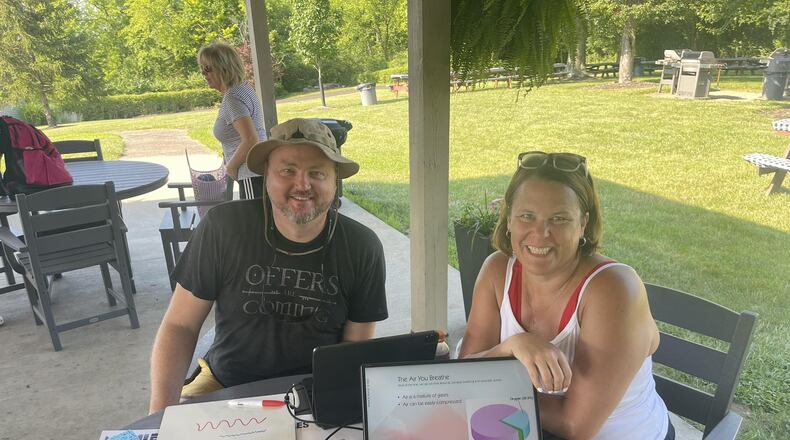Preparing for lessons
Before arriving to the first in-person lesson from Cincy SCUBA, whose owners were teaching this special course at the private tennis and swim club, emails started coming in that said:
- You must complete a medical form
- Read through all the expectations and possible limitations
- Take this online course through NAUI (National Association of Underwater Instructors)
- Purchase your own fins, water boots, mask and snorkel
And here’s where I really began to learn. Mistakes got made immediately.
- The online course that I expected to be a couple quick digital videos was 5-6 hours of intense learning
- The items I bought on Amazon were inadequate (read: cheap), though the description indicated otherwise
- I have two heart stents, and needed clearance from my doctor (who didn’t just up and leave an emergency heart surgery to come sign my paperwork)
The weekend ahead of lessons was eye-opening. This is a serious thing people do. Our bodies aren’t meant to just casually swim at certain depths and breathe normally.
After much of a Sunday afternoon spent completing the online course, I came out of it realizing it’s a world that I didn’t know much about. Buoyancy Control Devices are a thing? Descending and ascending can’t just happen quickly? You can clear a mask of fog completely underwater?
I was very intrigued.
Arriving at the club for the in-person work, the temps were in the high-90s. A heat dome was over Southwest Ohio the entire week. Thankfully, we’d always be in the pool.
Not! SCUBA is a lot of learning out of the water. The first hour each day, Cincy SCUBA owners Nick Rakel and Robyn Winegardner went back over the online coursework. My fellow classmates and I made our own attempts at truly understanding dive tables and ... science. Plenty of science for this journalist who prefers everything without math involved.
Diving in
It was time to get in the water, and this is where things got really physical: Nick and Robyn taught us how to get our gear together and to put it on ... heavy oxygen tanks and all.
We learned so much after that. How to get in and out of the water, how to properly descend and ascend, equalizing our ears, and the biggie ... buoyancy. How to keep from floating up and down and to be able to control your swimming so you can truly enjoy what you’ll see when you get into the real open waters.
Who knew you had to let air out when going down and when going up? I had no idea that was possible.
Breathing properly took me some time: Using just the regulator was something I had to get used to. I was breathing out of my nose, which caused my mask to fill with bubbles and water. Clearing the mask came easily ... but equalizing my ears was more difficult for me than I thought it would be.
It’s not that difficult for others. Everyone has a different experience with each aspect of SCUBA diving.
SCUBA is truly a buddy sport; you will learn the importance of rescue and helping others while underwater.
The videos I saw of Nick and Robyn’s adventures while diving have me ready to jump in: The colors, the beauty ... the peace. It looks very worth it to me.
I’m going to leave the rest to your imagination — because you should try it. Your age, size, experience ... it doesn’t matter. Cincy SCUBA is incredible with being patient, encouraging you through the process, and wanting you to join its community of friends who have this unique experience in common.
I was prepared to say “hey I did that once” and leave it at that. But Cincy SCUBA’s instructors have me hooked. They even helped lesson my fear of sharks.
Next up: Final certification at the quarry, and planning some amazing adventures.
About the Author

